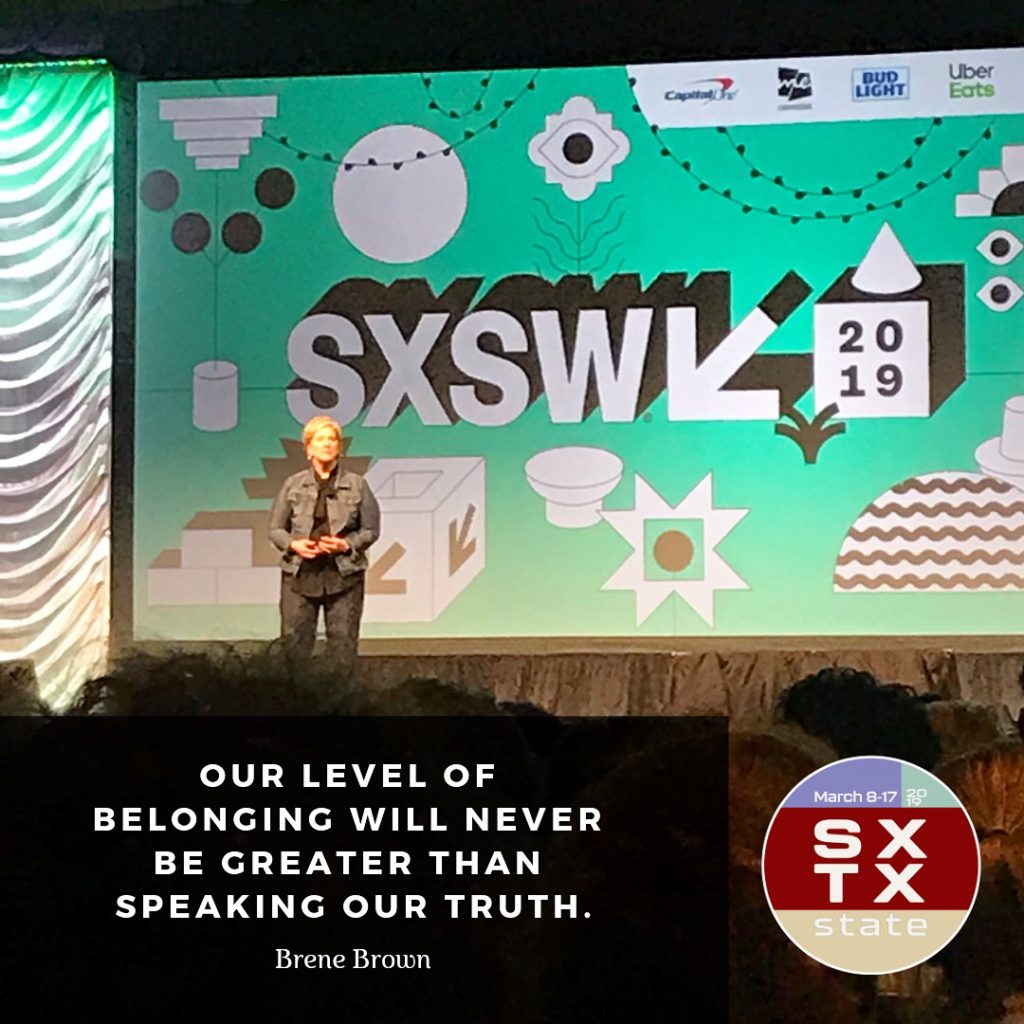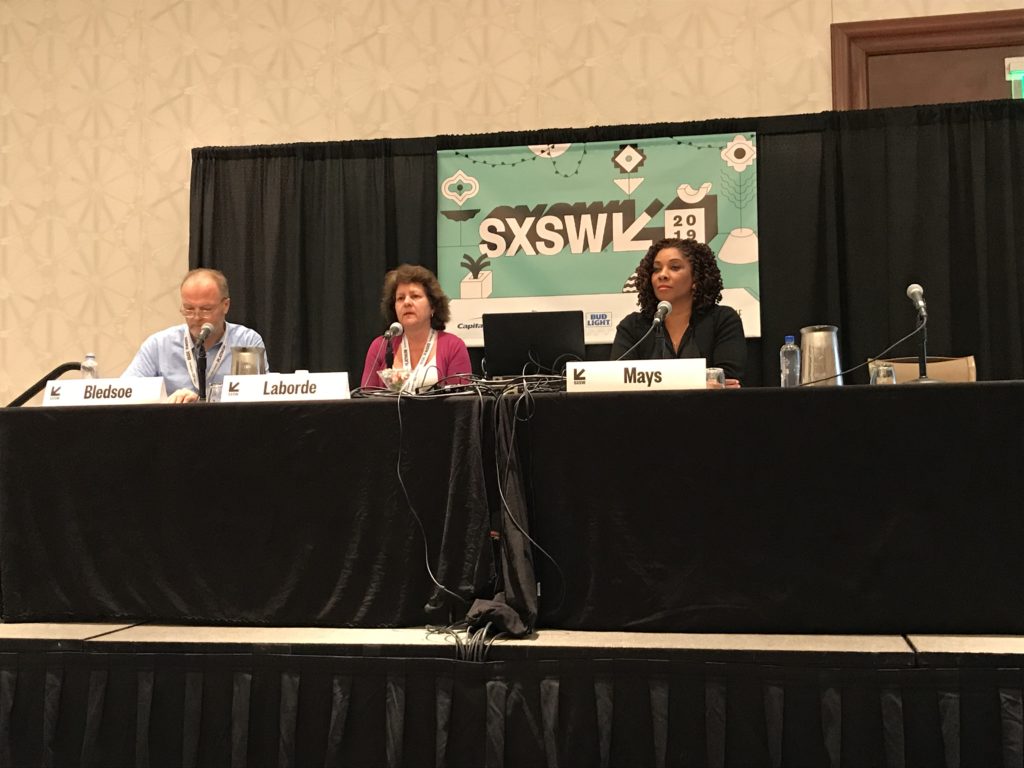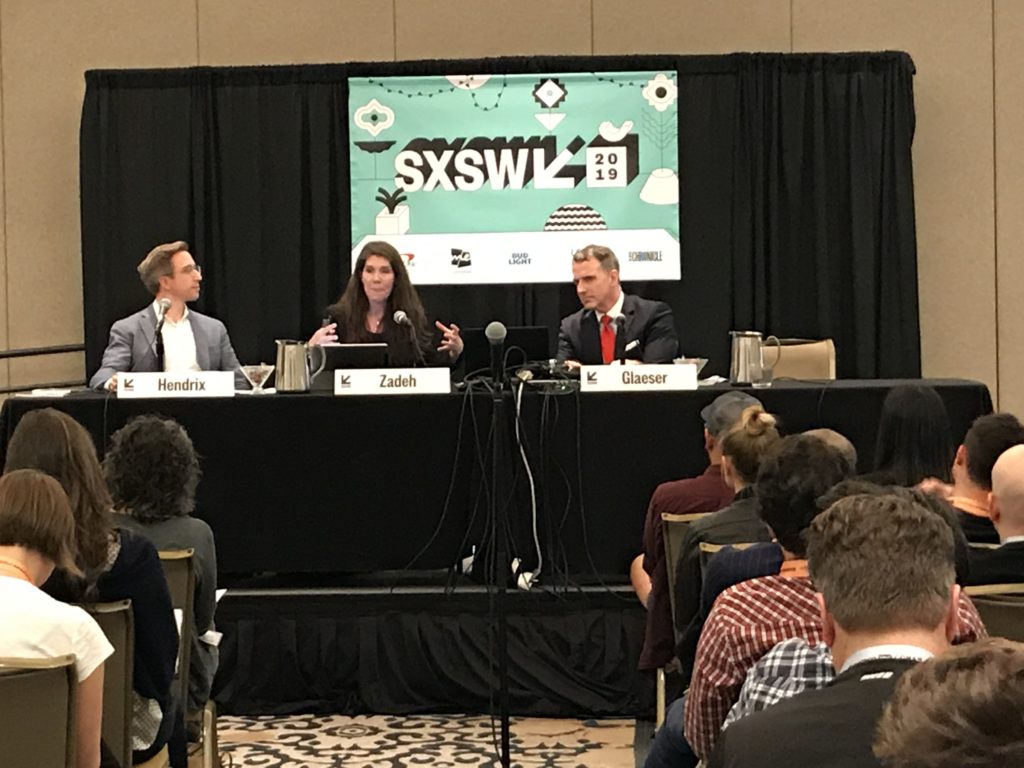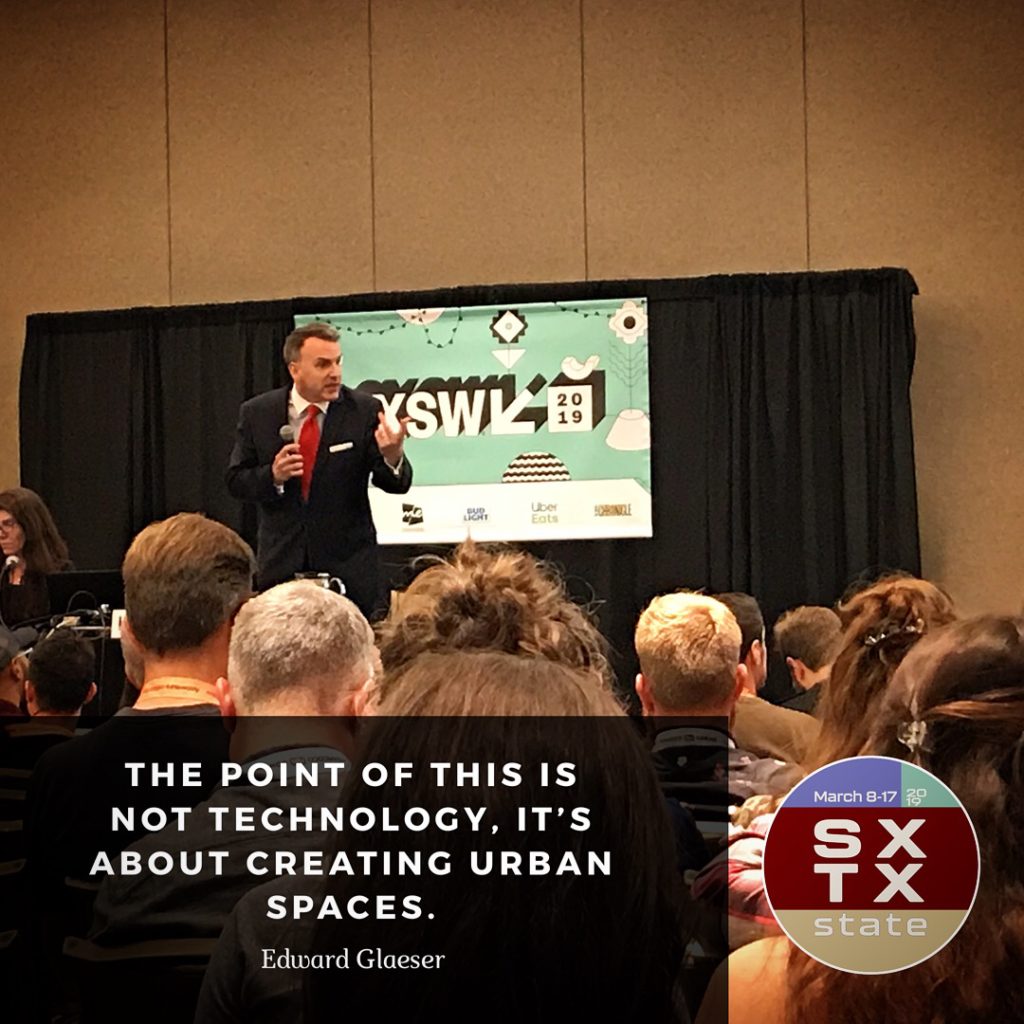In typical Austin fashion, we were welcomed to SXSW with unpredictable weather leading up to Friday, March 8th. The week started off with freezing temperatures which made the thought of waiting in long lines and schlepping around downtown Austin sound a little uninviting. Keeping with true SXSW history, mother nature decided to keep us on our toes. and We found ourselves on Friday welcoming the technology, music, film, and innovation playground with a warm, muggy, almost schmutzy hug.
To kick off day one, I started with Brene Brown’s opening session “The Only Unfollow that Broke My Heart.” This keynote focused on belonging and how we speak out truth, especially during a week of SXSW. The spirit of SX is alive when you are in a Ballroom D at the Convention Center surrounded by the top thinkers and creators in the world, and in walks a swearing, Christian, Texas woman delivering truth bombs and real moments.

The afternoon sessions dove straight into some hard issues from collaborative affordable housing to immigrants in the military to urban change through innovation. Issues we’ve heard people talk about but with a twist that requires conversations to move forward on a specific approach to this issue.
The Collaborative Approach to Affordable Housing

Tom Bledsoe, President & CEO of Housing Partnership Network, moderated this panel about how collaboration can lead to affordable housing efforts. He brought in two cities who have used HPN and this business model to create change on the ground level, Kathy Laborde from New Orleans and Sonya Mays from Detroit. The theme throughout is social enterprise and what this means in the Affordable Housing sector with, of course, the biggest challenge being raising capital. Through collaboration with the right non-profits, the ability to scale becomes much easier.
New Orleans and Detroit faced two different crises that forced each city into a collaborative approach, but it brought about the change that was needed to create affordable housing options for its underserved communities. Sonya Mays made a point about Detroit and how the financial crisis they experienced gave everybody a chance to take a step back and learn how to innovate and scale with the resources that were in front of them.
After the session, questions about raising capital and the difficulty of this continued. See the below video with Sonya Mays as she answers questions from participants.
Defending the Nation: Immigrants in the Military
Zaira Garcia moderated the next panel on immigrants in the military and how difficult the path to citizenship is even for those willing to serve their country. The panel brought together an army veteran immigrant, Andy Lalinde, an immigration lawyer and Army Wife, Zaira Solano, and Panshu Zhau, a PhD student, former army reserve who was discharged without notice due to the end of Military Accessions Vital to the National Interest (MAVIS) and is now fighting for his citizenship. The conversation around this already complicated issue becomes increasingly more complicated when dealing with the ins and outs of the United States military.
The issue becomes almost two-fold, the main issue is immigration and the views people have on immigrants in this country. As Panshu said, “we are not national risks, we are national assets.” The immigrants in this country who choose to serve are leaving behind their homes and the possibility of ever returning home.
The second part of this issue is centered around our veterans and the lack of conversations happening surrounding this issue. I had a chance to talk with Solano on this issue.
Gauging Urban Change with Google Street View

Michael Hendrix of the Manhattan Institute moderated this panel about urban change. Joining him is professor and author, Edward Glaeser, and urban planner for the city of Fort Worth, Ann Zadeh.
Urban change and growth are ever evolving, and census data cannot keep up with need for growth. Policy makers are operating at a higher level and they need the street smarts to know what their citizens are observing. The use of technology like Google Street View can bring in the data needed to help these policy makers and urban planners understand what the people want, what the people view as desirable spaces, and how this data can show valuable information like zoning.

Conversations around collaboration, using technology for social impact, and keeping the discussion around immigration moving forward sums up this day. SXSW is known for bringing people together for collaboration. It will be interesting to see how these conversations continue forward this week at SXSW as we look at ways to innovate our own infrastructure through the crossroads of human interaction, collaboration, and technology.

Comments are closed, but trackbacks and pingbacks are open.